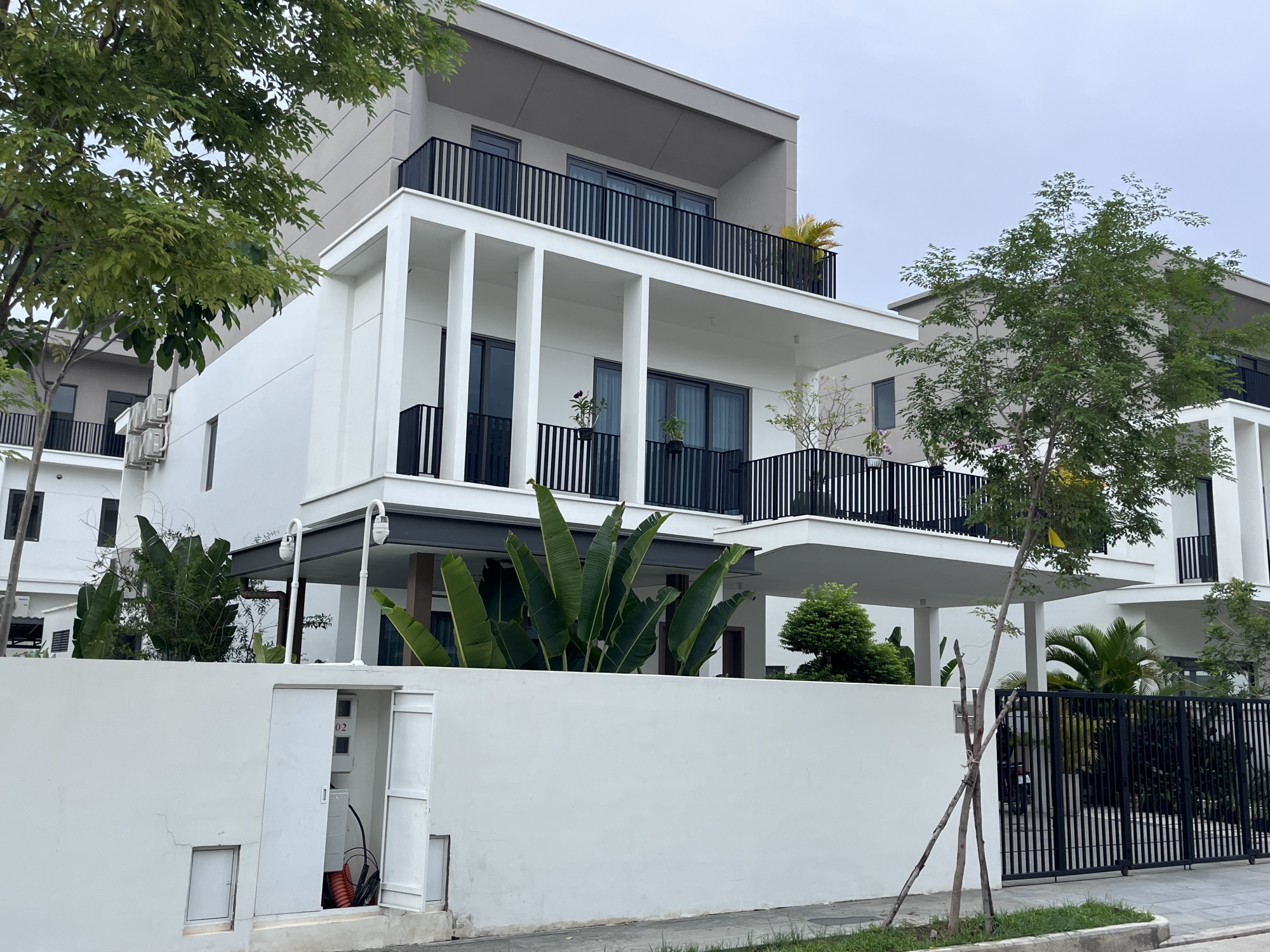
What are Passive Cooling Strategies?
Passive cooling strategies reduce dependence on mechanical technologies (such as air conditioning) by utilizing design elements, and nature-based solutions to improve indoor thermal comfort, awhile concurrently lowering energy consumption and greenhouse gas (GHG) emissions.

Strategic orientation and placement of the building
Aligning a structure to take advantage of prevailing winds and shade patterns can significantly reduce heat gain. For example, orienting a building to maximize northern and southern exposures — which typically receive more consistent and controlled sunlight throughout the day — can facilitate the effective integration of passive design strategies aimed at minimizing thermal gains and enhancing thermal comfort, without reliance on active mechanical systems. At the same time, minimizing eastern and western exposures can limit heating from direct sunlight that comes with the morning and afternoon sun.
Materials and Technologies
Insulating materials, especially sourced locally, provide climate-specific solutions that help lower energy demand, reduce embodied carbon, and minimize environmental impacts. Thanks to their performant insulation properties, they support thermal comfort enhancement and energy efficiency optimization. In addition handling strategic surface treatments, using low thermal mass options for building precincts like grass and permeable walkways will limit urban heat retention; and reflective and light-colored materials for roofs and walls, which will limit heat absorption by bouncing sunlight away, helping to keep buildings cooler.

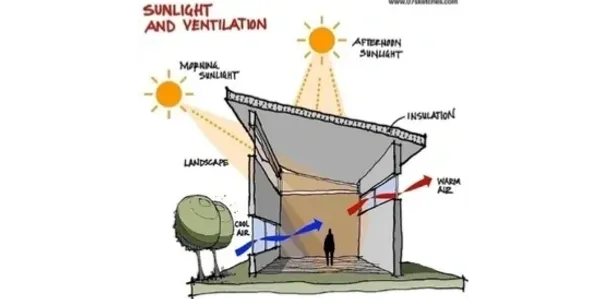
Ventilation
Natural ventilation strategies, such as cross-ventilation and stack ventilation, facilitate air movement through the building, expelling warm air and drawing in cooler air. Cross-ventilation involves strategically placed windows and vents to create airflow paths, promoting the exchange of indoor and outdoor air.
The placement of a building can promote natural ventilation by taking advantage of surrounding prevailing winds to cool the building, further improving thermal comfort and energy efficiency. This approach reduces the need for mechanical cooling systems.
At the neighborhood or residential development scale, leaving space between buildings, arranging them to take advantage of prevailing winds, and creating wind corridors can significantly improve natural ventilation. Adopting “porous” or “open” architectural designs—such as open layouts, gaps between structures, or elevated ground floors and intermediate open stories buildings—enhances airflow, supports cross-ventilation and passive cooling at both building and urban levels, and contributes to better microclimatic conditions and thermal comfort.
Shading
Overhangs, louvers, shutters and vegetation can protect the building from direct solar heat gain. Vegetation including trees, green roofs and facades, not only provides shade but is also contributes to evaporative cooling, mitigating the urban heat island effect around the building.
Shading from nearby buildings can also significantly reduce solar heat gain through a strategy of mutual shading, especially in dense urban environments. By blocking direct sunlight during peak hours, adjacent structures help lower indoor temperatures, decreasing the need for air conditioning.
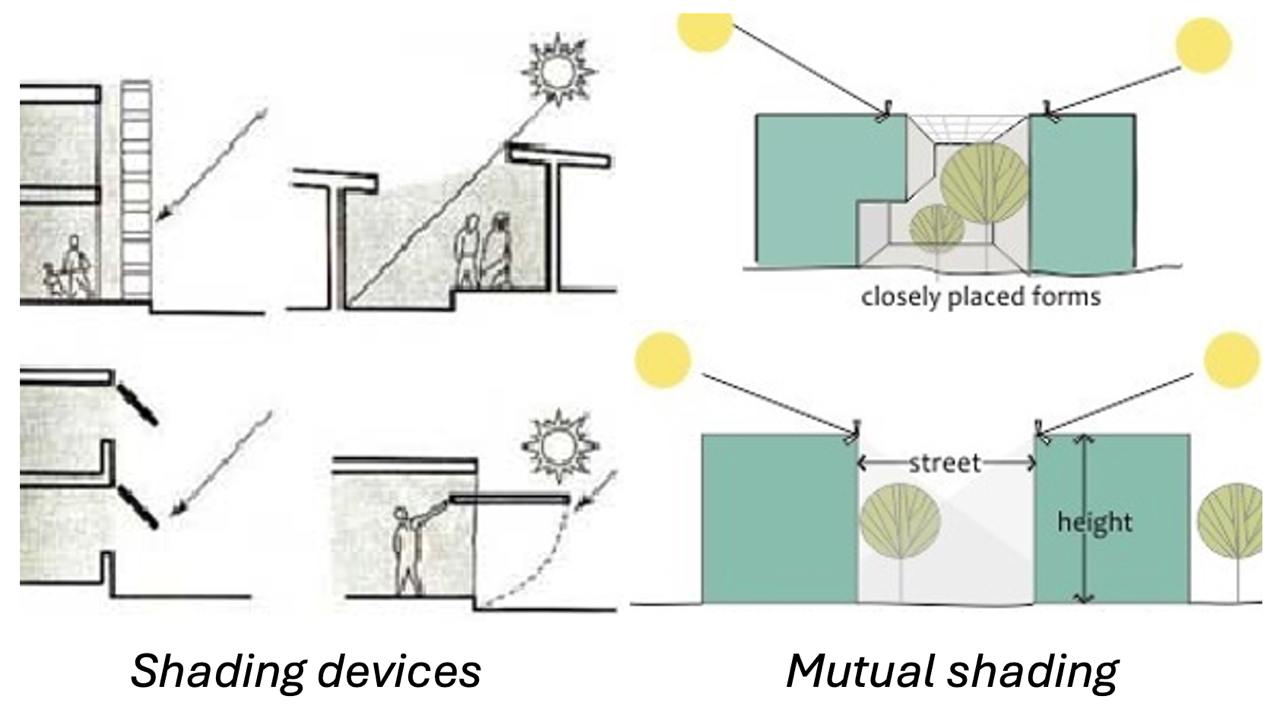
Growing Cooling Demand in an Era of Escalating Heat
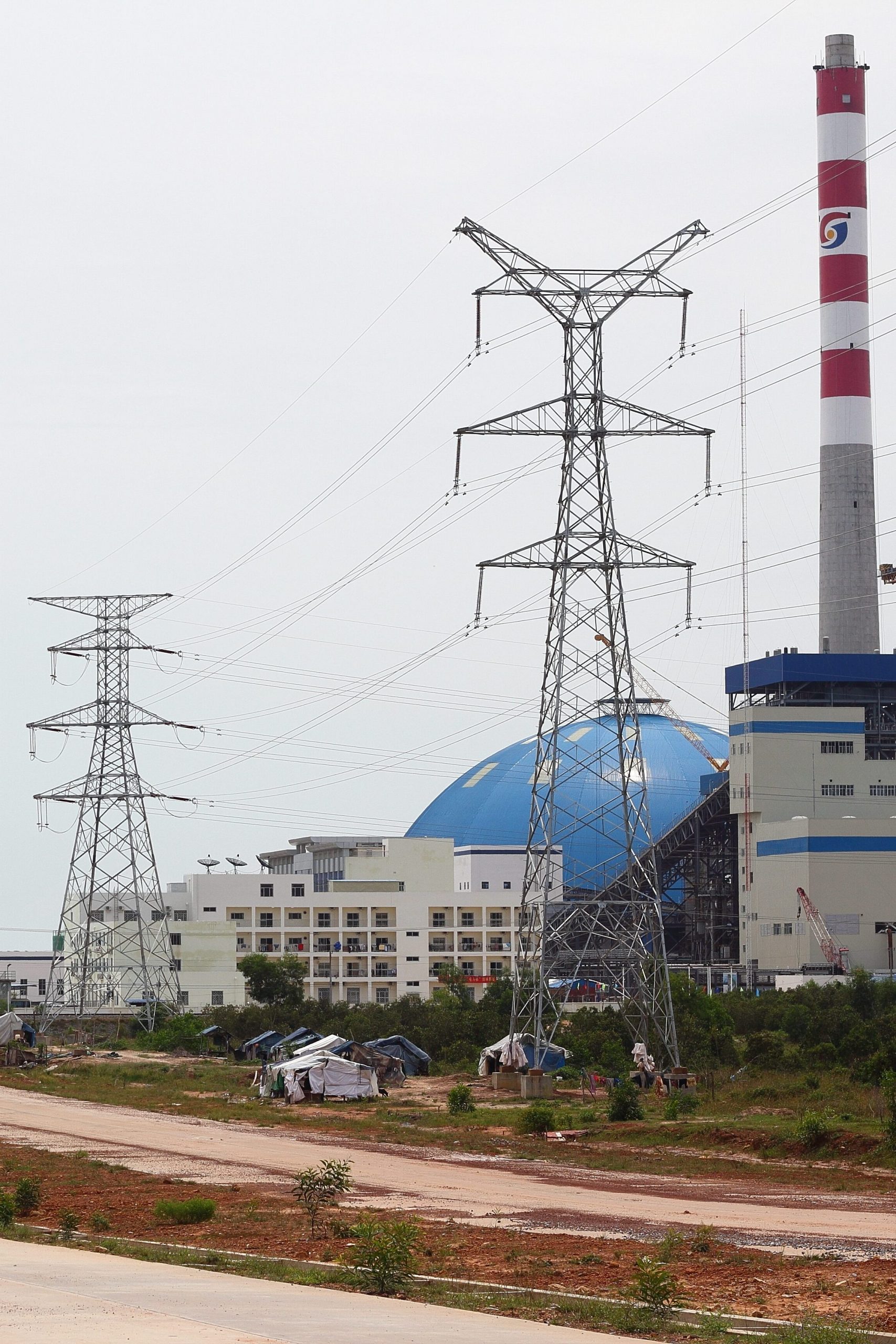
- Southeast Asia is undergoing rapid urbanization, economic growth, and population expansion. Without intervention, these trends, coupled with a warming climate, will exponentially increase energy consumption for comfort cooling and related emissions.
- According to the 2022 Cambodia National Cooling Action Plan, demand for space cooling is projected to double from 2020 to 2040, in Cambodia.
- Buildings currently account for one-third of the country’s total final energy consumption, with space cooling representing 45%, the largest share, of electricity usage due to Cambodia’s hot and humid climate.
- Taking action to reduce the reliance on mechanical cooling is crucial to mitigate emissions and manage the strain on the energy grid caused by the growing use of cooling appliances.
Global Cooling Potential
- Addressing cooling involves tackling a range of interconnected challenges, such as mitigating climate change through reducing cooling-related greenhouse gas emissions, adapting to increasing extreme heat, promoting equity and universal access to cooling, and advancing the Sustainable Development Goals (SDGs).
- As global temperatures rise, passive cooling design offers a viable solution for enhancing thermal comfort while mitigating environmental impact. These strategies are flexible and tailored to local climates. Implementing passive cooling design in new building projects can reduce cooling loads by 30 to 40% (Al-Tamimi 2022). Retrofitting existing buildings can also reduce cooling loads by 10 to 20% (Hondeborg et al. 2023).
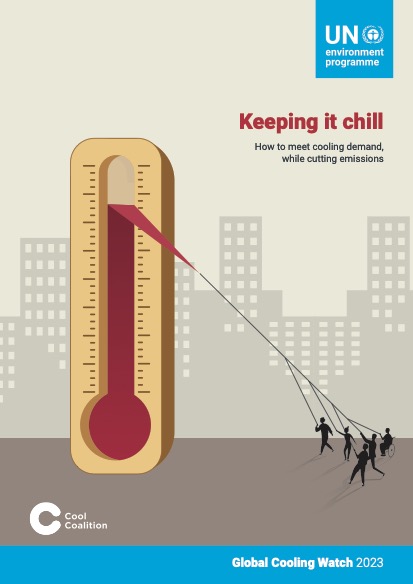
ESTIMATED PROJECT IMPACT

Passive cooling is considered a priority by building sector stakeholders, and a preferred option to reduce reliance on active cooling system.

2% of the existing building stock (residential and commercial) is retrofitted and 20% of new buildings utilize passive cooling strategies.

Achieve energy savings of 10% to 20% or more by integrating passive cooling in retrofits and new construction, significantly outperforming the energy efficiency of conventional buildings of similar standards.

New building energy guide lines incorporate specific guidance on building envelopes performance, driving increased adoption of these energy-efficient strategies

Passive cooling policies and practices are adequately accounted and monitored in the GHG inventory and contribute to the achievment if the NDC commitments
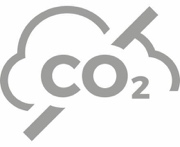
Based on estimates, the project could contribute cumulatively to 0.5 MtCO2eq reduction by 2030.
